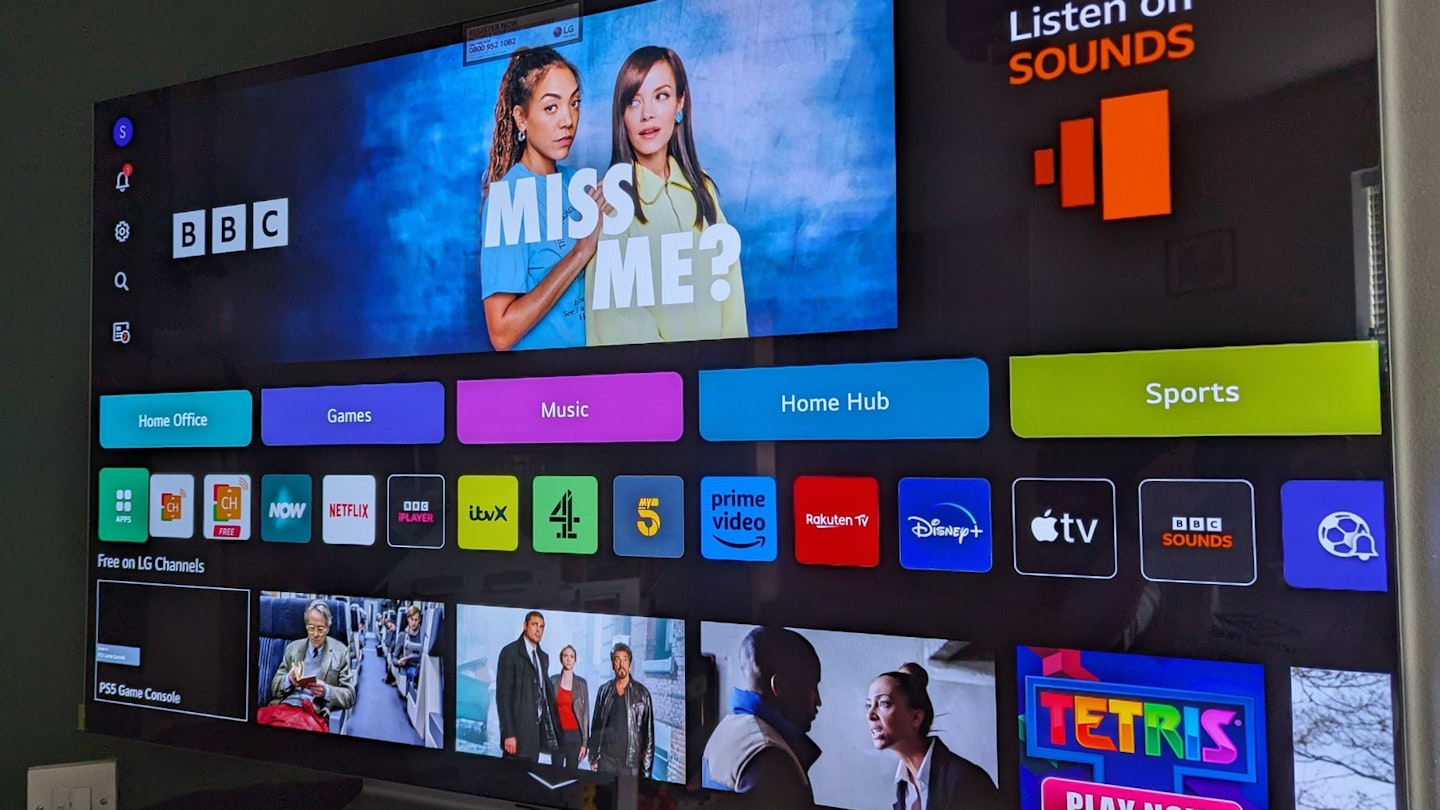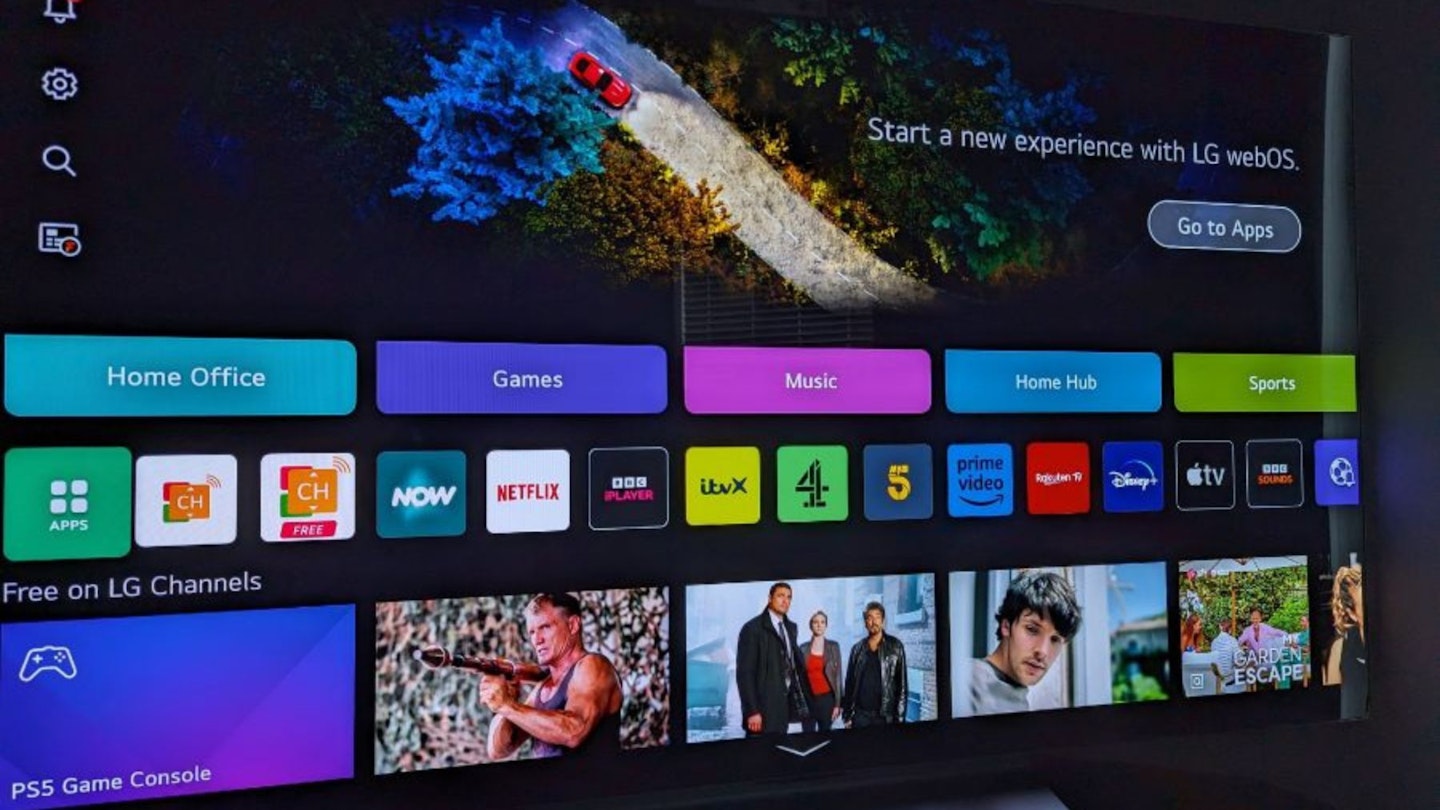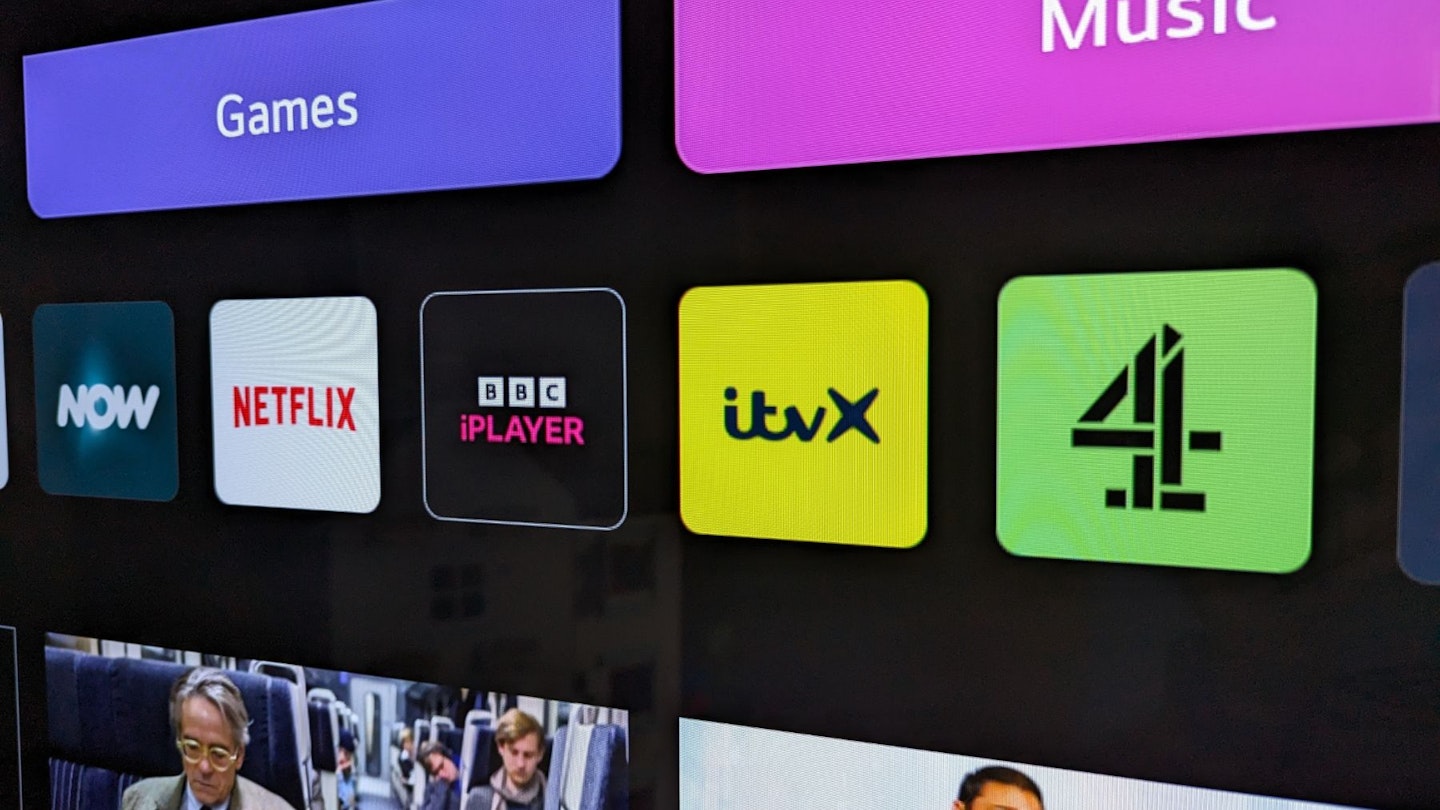The rise of streaming services means we are no longer limited to the terrestrial channels of yesteryear. Instead, we can choose from dozens of channels and streaming services – Netflix, Amazon Prime Video, Disney Plus, Paramount Plus, and BBC iPlayer, to give just a few examples. The best TVs on the market offer far more than a handful of channels, with smart features that allow users to choose from an array of viewing options.
At the same time, the best streaming devices such as the Amazon Fire Stick, Google’s Chromecast and the Apple TV 4K mean that even if you’re TV isn’t smart, plugging one in quickly gives it an education. At-home entertainment has come a long way since the days when terrestrial television had four channels, satellite was a luxury, and the arrival of Channel 5 was considered a national event of such enormity that the Spice Girls got involved.
But does it really matter whether you use a smart TV or a streaming device? What are the advantages and disadvantages of each? And, while no mid-90s girl groups are likely to be involved, which option will best spice up your life?
What is a smart TV?
A smart TV is any television that can connect to the internet without the need of peripherals such as a set-top box, or streaming device. Much like a mobile phone, smart TVs often have an app store that enables users to download other streaming services, social media, music, YouTube, and even games.
Many will also connect to a phone or tablet and allow you to share content from your device on the big screen. For example, if you want to use an emulator to play your favourite video game from your childhood, you could potentially play it on your television, and use your phone as a controller.
What is a streaming device?
A streaming device offers much of the same functionality as a smart TV. The difference is that these devices can be plugged into one of your TV ports to make your TV smarter. They connect to the internet and allow you to stream content from a variety of different apps.
These devices offer you access to plenty of content and will work with almost any television with the right port type to plug it into (usually HDMI). This includes older smart TVs that may not be compatible with every new streaming service, as well as non-smart TVs.
Benefits of smart TVs

There are plenty of benefits to choosing a smart TV, including:
Convenience – we all like life to be easy, and Smart TVs can certainly help with that. No external devices that you need to turn on or off, no secondary remote to use. It’s all there in one neat package. Many also offer voice controls and allow you to control other smart devices in your home.
Integration with other smart devices – many smart TVs allow you to download apps to control other smart technology. Whether that’s changing your lighting before sitting down for a movie night, adjusting the temperature on your smart thermostat, or even linking up to your video doorbell, so you can see who’s at the door.
Lots of apps – as well as apps for your smart home, smart TVs offer lots of other tools. These include a wide range of streaming apps, music, social media, gaming, and web browsing, to give a few examples. Specifics will vary between models, but you can do far more than just watch TV.
Manufacturer updates – much like your phone or computer, smart TV manufacturers provide software updates to keep it working as well as possible. These include bug fixes, security updates, and delivering new apps and other features.
How long updates are provided for varies by manufacturer. But LG announced at the start of 2024 that it will provide five years of upgrades to newer models, while Samsung says that most TVs will receive feature updates for two years, while further updates for fixing issues “may still come”.
Smart TVs have up-to-date features - a brand-new smart TV will likely come with many of the latest features, especially at the premium end. 4K, 8K, HDR to improve colour contrast, and improved brightness, are all features that the latest smart TVs might offer. And the reality is that no matter what streaming device you use, if the TV you’re plugging it into doesn’t come with these features, they won’t magically appear (although some streaming devices, such as NVIDIA Shield, do offer upscaling) .
The Samsung S95B is an example of a premium smart TV that has all the bells and whistles. Integrating Quantum Dot and OLED technology, 120Hz refresh rate, and a maximum 2000 nits of brightness, it is a superbly well-rounded TV. Alternatively, Samsung’s BU8500 offers a more affordable smart TV that doesn’t cut back on quality.
Benefits of streaming devices

While smart TVs offer plenty, they aren’t the best option for everyone. Streaming devices are a compelling alternative, and for many, will be more appropriate.
Cost - streaming devices are smaller and cheaper than a smart TV. If you don’t want to spend hundreds (or thousands) to upgrade your existing television, then buying a streaming device can allow you to access the same content you’d find on a smart TV, at a fraction of the price.
Size - most of these devices plug directly into an HDMI slot in the back of the television, so won’t take up any extra space in your house. And because of their small size, you can easily use them on different TVs. You can even take them on holiday with you, which is a lot more convenient than trying to pack your television.
That flexibility also translates to their functionality. Like a Smart TV, a streaming device will receive regular updates. But if there comes a point where it’s no longer supported, or won’t give you access to new apps, it’s a lot easier and cheaper to upgrade your streaming device, than it is to replace an entire television.
Streaming devices are dedicated to a single purpose - this means that the software and processor are built solely in service to streaming content. In theory, this can equate to more user-friendly interfaces, faster updates, and smoother playback. A smart TV needs to use its processing power to multitask, which may reduce performance slightly.
There are plenty of streaming devices to choose from, at a range of price points. The Amazon Fire TV Stick is one of the best available and will typically cost less than £45. Or, if you want something that offers 4K, has an incredibly intuitive interface and syncs seamlessly to Apple devices you may already own, then the Apple TV 4K is a great choice. As you’d expect from Apple, it’s a premium product with an RRP of £169 for the 128GB model. But it if you want one of the best devices on the market, this is a good option.
Comparison: Usability and Performance
In terms of usability, both smart TVs and streaming devices are designed to be user-friendly. But there are some differences. As we mentioned earlier, streaming devices are dedicated to one primary function, while smart TVs are a little more complex. As a result, you might find that navigating a smart TV is slower than a streaming device.
It’s also fair to say that apps made for TVs aren’t necessarily as well designed as those on a streaming device. So, the apps themselves may take longer to load and perform less well.

While a smart TV will receive updates for a while after you’ve bought it, the reality is that the manufacturer won’t make much money from you once you’ve made your purchase. As a result, apps will start to perform more slowly and may eventually stop working altogether. While it’s a similar story for a streaming device, it's easier to replace than a smart TV.
Finally, streaming devices will typically offer access to a wider range of content than a smart TV. Some TV manufacturers use their own proprietary operating system rather than a more universal OS such as Android TV. This means that there will be fewer apps and other services available as app developers invest their time and energy in developing apps for the broadest possible user base. Streaming devices tend to offer channels and services that simply aren’t available on every smart TV.
Cost Considerations
For many, cost is the biggest factor when choosing what to buy. So how do smart TVs and streaming devices compare in this respect?
A smart TV will always cost significantly more to buy than a streaming device. Depending on what you choose, the difference could be at least several hundred pounds, potentially more. But, if you’re still using an HD-Ready television from fifteen years ago, you may be considering upgrading your set anyway.
If that’s the case, then a streaming device is potentially a luxury rather than a necessity, because any modern TV you consider buying will almost certainly be a smart TV.
Another thing to consider is the cost of subscribing to various streaming services. Now, you may get a promotional offer when you buy a streaming device or smart TV, that gives you free access to a streaming service for a few months. But eventually, the likelihood is you will have to start paying for them. If you’re someone who likes to have Netflix, Amazon Prime video, Apple TV Plus, and more available, the monthly cost starts to increase. But this is true for both smart TVs and streaming devices.
Finally, consider how long each device is likely to last. A TV might reasonably expect to work for several years. But there will come a time, probably far sooner than that, when a manufacturer will stop supporting your particular model. And it isn’t as simple as swapping out the processor on your smart TV. Apps may stop working, and the software may start to struggle to handle all the smart features it originally had. When this happens, it’s far cheaper and easier to swap out a streaming device than it is to replace your TV.
So, should you choose a smart TV or a streaming device?

Every individual will have their own specific needs to consider. But here are some general pointers that you should think about before making your decision:
Do you need to replace your existing TV?
If you’re current TV is old and you want a bigger screen or a higher definition picture, then upgrading your TV makes a lot of sense. But, if you’re happy with your current TV and you simply want access to streaming services, then a streaming device may give you everything you need at a fraction of the cost of a new television.
How many TVs do you want to access streaming services on?
Do you just have one TV in the house that you use for all your viewing? Or will you sometimes stream shows in your living room, and perhaps watch a film in bed at night? If so, rather than having a smart TV in every room, it may be simpler (and cheaper) to have one streaming device that you plug and unplug into each TV as you need. Even if you do have a multi-room setup, buying more than one streaming device will be more cost effective than buying multiple new TVs.
What's the best budget-friendly option?
Streaming devices are by far the more cost-effective option. They are cheaper to buy, and in years to come, will be cheaper to replace when they are no longer supported. Plus, you get all the benefits of a streaming device in terms of usability, access to content, and updates.
What’s the best for a gadget lover?
If you’re a gadget lover, or particularly tech-savvy, the chances are you’ll want something that’s going to be user-friendly, intuitive, and doesn’t have any lag. In that case, a streaming device is, once again, likely to be your best choice. But that isn’t the whole story, because it will also depend on what your existing television offers. If you want the best possible television-watching experience, then a streaming device will help.
But it won’t for example, give you 4K on an old TV, nor will it give you the best brightness, contrast, or audio options. These will always be limited by what your TV can support. In which case, you may want to consider updating your TV first, and then potentially adding a streaming device further down the line. There’s no rule that says you can’t use both.

Future Trends
Smart TVs and streaming devices are immensely popular. But what does the future hold for these home entertainment systems?
New technologies
Technological innovation never stops, and in years to come, could we see the use of augmented reality in our smart TVs? Or will alternative hardware, such as Apple’s Vision Pro headset, eventually replace the need for TV’s entirely, and change the way we consume content?
Something like that appears a long way off, but the rise of virtual reality and augmented reality could fundamentally change the way we interact and view content, being far less passive than before. This could lead to entirely new types of entertainment.
Mergers and acquisitions
There are many different streaming platforms for users to choose from. Some are more profitable than others, and so, we’d expect to see the strongest services buying the weaker ones, or acquiring companies to help grow their content and audience base. Examples include Disney buying Lucasfilm, or Netflix securing the rights to WWE wrestling.
Eventually, we could see some sort of mega deal between companies, for example, a Warner Bros. Discovery and Paramount merger. While that may offer consumers plenty of content with fewer subscriptions needed, it also runs the risk of limiting choice. And then there’s also the increased appearance of ads into these streaming services, which could well become harder and harder to avoid, especially if there’s less choice for us as consumers.
Conclusion
For most people, the decision about whether to buy a smart TV or a streaming device will come to factors such as budget, and what they already have or don’t have. The two devices offer a lot of overlapping features, particularly when it comes to streaming popular content.
But they also have some big differences – cost, functionality, and long-term support, to name three of the most important. If you already have a smart TV, then you can potentially do without a streaming device. However, owning a smart TV doesn’t mean a streaming device is entirely redundant; they can still offer plenty in terms of ease of use, available apps, plus the ability to use it on another television, should you wish.
If you don’t have a smart TV, then a streaming device will effectively give your old telly a new lease of life. But it won’t necessarily add high definition, high dynamic range for improved contrast, or many of the other features you would expect to find in a modern, good quality smart TV. As ever, it comes down to your individual circumstances to decide what combination will be best for you.
Steven Shaw is a Senior Digital Writer covering tech and fitness. Steven writes how-to guides, explainers, reviews and best-of listicles covering a wide range of topics. He has several years of experience writing about fitness tech, mobile phones, and gaming.
When Steven isn’t writing, he’s probably testing a new smartwatch or fitness tracker, putting it through its paces with a variety of strength training, HIIT, or yoga. He also loves putting on a podcast and going for a long walk.
Subscribe to the What’s The Best Newsletter to keep up to date with more of the latest reviews and recommendations from the What’s The Best team.
